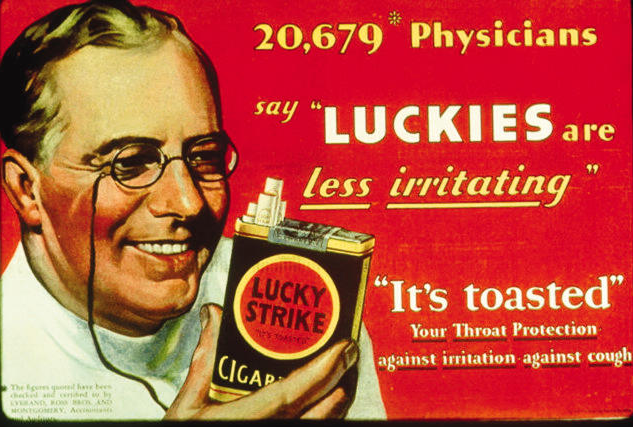
The Medscape article Physician Health Programs- More Harm Than Good? by Pauline Anderson shed some light on coercive, controlling secretive lair of Physician Health Programs. Coercive v. supportive is the question Alissa Katz presents in todays Emergency Medicine News. Supporting coercion, John Knight and J. Wesley Boyd claim that any doctor caught in the maw of their state PHP must abide by whatever the PHP requests in order to continue practicing medicine. Susan Haney concurs who notes the unwary self-referrer who unwarily steps into the lions den.

Former White House Drug Czar (1973-1977) Robert Dupont, M.D. disagrees claiming the programs are worth the price of a “lifetime of well-being.”
You don’t say? Robert Dupont’s ties to the Drug and Alcohol Testing Association (DATIA) are thick and the designs of the former National Institute on Drug Abuse Director are spelled out in the ASAM White Paper on Drug Testing as well as his keynote speech before DATIA proposing expansion of this paradigm to other populations including workplace, healthcare, and schools. He profits from both drug tests and employee assistance program management. The “PHP-blueprint” is simply Straight, inc. for doctors and the same propaganda, fabricated studies, 12-step indoctrination, coercion, control and abuse remain unfettered and just as vile.
Dupont wants to swindle the PHP system into other EAPs such as as DOT proclaiming the “need to reach more of the 1.5 million Americans who annually enter substance abuse treatment, which now is all too often a revolving door.”1 They conclude:
This model of care management for substance use disorders has been pioneered by a small and innovative group of the nation’s physicians in their determination to help other physicians save their careers and families while also protecting their patients from the harmful consequences of continued substance abuse. In fulfilling the professional admonition “physician: first heal thyself,” these physicians have created a model with wide applicability and great promise.1
“Based on abundant evidence, a “new paradigm” for substance abuse treatment has evolved that is the exact opposite of harm reduction. This paradigm enforces a standard of zero tolerance for alcohol and drug use that is enforced by monitoring with frequent random drug and alcohol tests. Detection of any drug or alcohol use is met with swift, certain, but not draconian, consequences.”
Straight, Inc. –Torture as treatment
In 1981 Dupont made similar claims about Straight, Inc., a non-profit teenage rehabilitation center. The predecessor of Straight, Inc., the Seed, was started in 1970 in Florida with a start up grant of $1 million dollars from the federal governments National Institute on Drug Abuse (NIDA). Director of NIDA, Robert L. DuPont, Jr. had approved the grant.on the antidrug cult Synanon founded in 1958. Deemed a the “family oriented treatment program,” Dupont encouraged organization and expansion. Targeting the children of wealthy white families they exploited parents fears for profit. Signs for hidden drug use such as use of Visine, altered sleep patterns, and changes in clothing style were used as indications for referral. Any child who arrived would be considered an addict in need of their services. Coercion, confrontation, command and control as the guiding principles,. Submit or face the consequences. .We know what’s right. The idea was to strip the child of all self-esteem and then build him back up again in the straight image. Abused dehumanized, delegitimized, and stigmatized-the imposition of guilt, shame, and helplessness for ego deflation and murder of the psyche to facilitate canned and condensed 12-step as a preparatory step on the path of lifelong spiritual recovery.
Children were coaxed or terrorized into signing confessions, berated, and told they were in “denial. Inaccurate and false diagnoses were given to wield greater control. Reports and witness accounts now indicate that many of the kids did not even have drug problems but by creating a “moral panic” about teenage drug use they exploited parents fears for profit. Straight, Inc. became the biggest juvenile rehabilitation center in the world. Health officials in Boston cited Straight for treating a 12 -year old girl for drug addiction when her records revealed all she did was sniff a magic marker! Pathologizing normality.
Methodologically flawed research , deceptive marketing, and propaganda were all used to support the continuation of the program. Designed to be hidden from public view. Straight, Inc. had no regulation or oversight. These programs of torture and abuse resulted in many suicides, suicide attempts, post-traumatic stress disorder and other psychological and grave psychological trauma.There is a FB page dedicated in memory to all of those who died.
Of course Dupont brandishes the “PHP-blueprint” claiming remarkable success in the same old saw we have heard ad nauseam. This paper is paraded around as ifs the holy grail but it is methodologically bottom of the barrel and the conflicts-of-interest are obscene. This retrospective five year cohort study published in 2008 is their flagship and shining star and they claim an 80% success rate in treating doctors which sounds pretty good until you consider 80% of the doctors therein do not have a substance use disorder.
The 2008 Physicians Health Program study inexplicably excluded resident physicians because they “were both younger than the average practicing physician and therefore at higher risk of substance abuse.” Other than cherry picking to favor success what is the logic behind that.
More importantly, however, is the 24 that “left care with no apparent referral” and the 48 that “involuntarily stopped or had their licenses revoked.” It is my understanding they chose these endpoints due to the large number of doctors who died by suicide so instead of identifying “suicide” they chose what they did to them as an endpoint. “left care with no apparent referral” sounds better then “left care and shot himself in the head.”
Dupont is bragging and flagging the “blueprint” as a successful model applicable to other populations and plans to bring it to you. Why? To sell long-term inpatient treatment and frequent drug testing. Dupont once recommended everyone under 40 be tested when he was 41. This man wants to test everyone. If he could he would test infants–hell he’d test fetuses if he could. One thing is for certain though–if the blinkered masses don’t wake up from their apathetic slumber they will not too far from now be waking up to pee in in a cup and won’t be able to do a damn thing about it.
|
Emergency Medicine News:
doi: 10.1097/01.EEM.0000480794.97823.49
News
News: Physician Health Programs: Coercive or Supportive?Katz, Alissa You wouldn’t think physician health programs — designed to help doctors recover from substance abuse — would be such a contentious topic. But more than a few physicians complain that participation is “coercive” if a physician wants to retain his license. The programs are run on a state level, and have evolved into for-profit entities, according to physicians who have been through one. You can find one in all 48 states and Washington, D.C., charged with preventing “substance abuse problems among physicians and to detect, intervene, refer to treatment, and continuously monitor recovering physicians with substance use disorders.” (J Subst Abuse Treat 2009;37[1]:1.) Physician health programs (PHPs) are funded a variety of ways depending on location, including state licensing board grants, fees charged to participants, and contributions from state medical associations, according to reports. When a physician agrees to cooperate with the PHP and adhere to any and all recommendations, it decreases the probability he will be subject to disciplinary action and increases the likelihood he will be able to remain in practice, PHP proponents say. But not everyone agrees. “Participation is coercive, and once a PHP recommends monitoring, physicians have little choice but to cooperate if they have any intention of ever practicing medicine again,” J. Wesley Boyd, MD, PhD, and John R. Knight, MD, former PHP associate directors in Massachusetts, said in an editorial in the Journal of Addiction Medicine. (2012;6[4]:243.) Physician health programs report results of compliance, including drug test results to licensing boards, credentialing agencies, and employers whether the physician is sober, compliant with his treatment, and capable of safely practicing medicine. “Programs are generally structured to encourage professionals to get help early before the onset of problems in the workplace, but the consequences depend on the situation and the state policies,” said Warren Pendergast, MD, a psychiatrist and the CEO of the North Carolina PHP (NCPHP) Compliance MentalityNorth Carolina’s PHP was audited in 2013-2014. “There were a number of protections they wanted us to institute. There was a conflict of interest issue raised about our every-other-year retreat having a small amount of contribution from assessment and treatment centers, and we stopped that in 2012. Our policy was similar to many medical meetings sponsored by vendors,” said Dr. Pendergast. Drs. Boyd and Knight said in their editorial the programs have a compliance mentality that reports physicians to their medical board for possible disciplinary action if they don’t comply with the program’s recommendations, depriving the physicians of having a say in their own treatment. So why are physicians opting into these programs? Colleagues can recommend them for an evaluation and they have to comply, and others who self-refer just don’t know any better, said Susan Haney, MD, an emergency physician in Oregon, who went through treatment assigned by her state’s PHP. “That’s the problem. You assume, as I assumed, that the medical board is staffed with caring and competent physicians, and that the health program is there to help. So you go to them naïvely asking for help or your colleagues refer you to them thinking you’ll get help. I guess some people find help. But a lot of physicians are exploited by the system,” she said. Robert DuPont, MD, the president of the Institute for Behavior and Health and a supporter of physician health programs, said such criticisms aren’t looking at what the programs have achieved. “Outcomes are very positive, with only 22 percent of physicians testing positive at any time during the five years and 71 percent still licensed and employed at the five-year point,” according to a study Dr. DuPont co-authored. (J Subst Abuse Treat 2009;37[1]:1.) Abstinence rates among substance-abusing physicians who engage with PHPs are in the 75 to 80 percent range, which is far higher than almost any other form of substance abuse treatment. This can be attributed to PHPs’ demographic and higher socioeconomic status, compared with those in other substance abuse programs, and the risk-to-reward ratio is often higher for PHP participants. (BMJ2008;337:a2038.) “Programs have no leverage. They have no punishment; they have no consequences. The consequences are all kneaded out by other organizations, by the medical boards or the hospitals. I think all these critics have gotten it mixed up. The physicians who are coming to the PHPs have big problems; they’re under a lot of pressure, not from the PHP but from somewhere else.” Costly TreatmentDr. DuPont’s study said PHPs don’t provide formal addiction treatment, either, but instead function as long-term case managers and monitors for participants. Evaluations through PHP-recommended treatment centers aren’t usually covered by insurance, for example, and can cost as much as $4,500 for a 96-hour evaluation, if not more, and can go as high as $39,000 for a typical three-month length of stay. “If treatment is priced so high that it is out of the reach of potential physician-patients, it does not serve the purpose for which it was created and thus represents an administrative and management failure on the part of the PHP,” Drs. Boyd and Knight wrote. (J Addict Med 2012;6[4]:243.) Because many centers that specialize in evaluating health care professionals also provide costly treatment, Drs. Boyd and Knight said they are left wondering whether financial incentives play a role in the recommendation. Reports argue that physicians charge a lot for their time and services, so they are financially able to pay more than a non-physician would for the same treatment. “In our experience, it is far more common for physicians to simply stay at the same facility for treatment rather than packing up and moving elsewhere,” they wrote. Evaluation and treatment centers support PHPs financially, too, adding to a potential conflict of interest between the two. Dr. DuPont said he thinks the price to pay for assessments and treatment, however, is small compared with the perspective of a lifetime of well-being. “My experience is that PHPs are certainly willing to work with physicians on cost issues. I think it’s not realistic to think the people in the programs are not going to need treatment. To me it goes without saying the treatment is part of the package,” he said. North Carolina has a scholarship program administered through the state’s Medical Society Foundation, and the several-thousand-dollar assessments are part of the reason the program screens. “We don’t send everybody for assessment,” said Dr. Pendergast. Share this article on Twitter and Facebook. Access the links in EMN by reading this on our website or in our free iPad app, both available at www.EM-News.com. Comments? Write to us at emn@lww.com. Copyright © 2016 Wolters Kluwer Health, Inc. All rights reserved. |



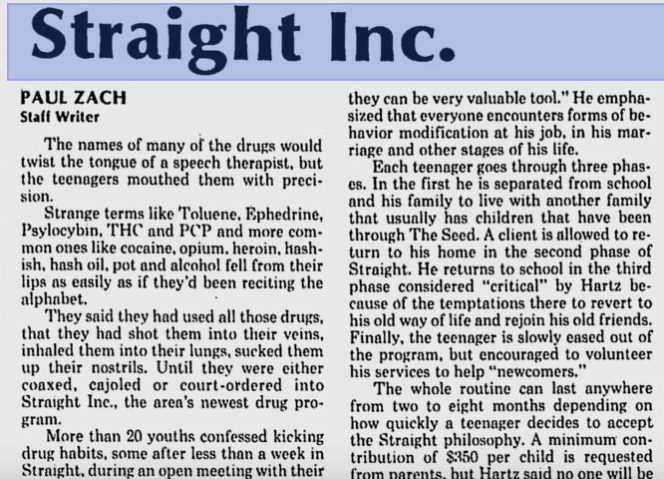
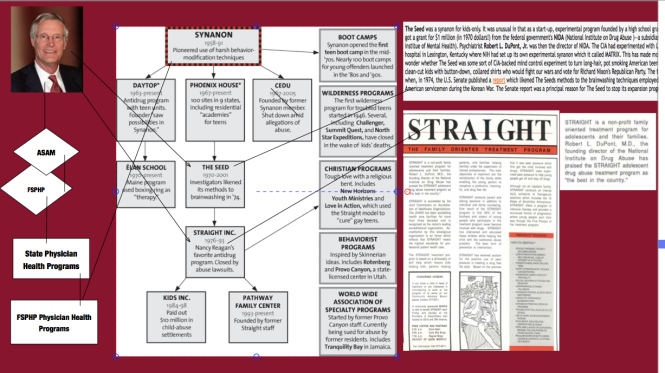
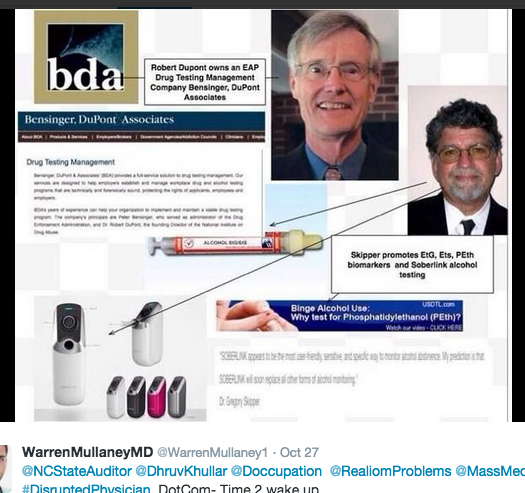
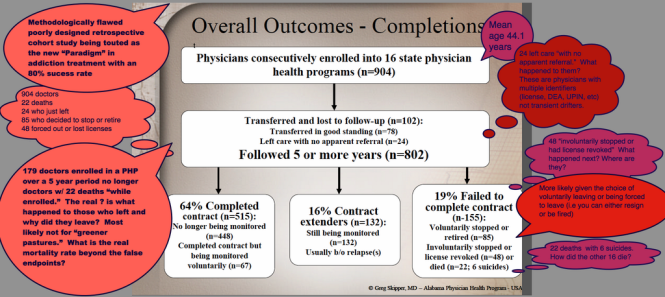


Not in my son’s case. K
Sent from my iPad
>
LikeLiked by 1 person
More like a lifetime of well being for the wallets and egos of these guys. I can’t see it doing much of anything else.
LikeLiked by 1 person
His grand plan is pushing this on the public as the “New Paradigm”. Read ASAM White Paper on Drug Testing
LikeLike
I found a better link (pdf format) of the content by Janet Parker http://www.heal-online.org/unjp2011.pdf
LikeLiked by 1 person
[…] Source: Robert Dupont claims PHPs result in a “lifetime of well-being” LMAO […]
LikeLike
[…] CONTINUE READING AT “DISRUPTED PHYSICIAN”! […]
LikeLiked by 1 person
[…] CONTINUE READING AT "DISRUPTED PHYSICIAN"! […]
LikeLiked by 1 person
[…] is the former Drug Czar Robert DuPont. At 6:30 you can hear about the ‘between the eyes repeatedly with a 2×4′ method of […]
LikeLiked by 1 person
And 80% plus of those getting bludgeoned into his programs by this stick don’t even need it!
LikeLiked by 1 person